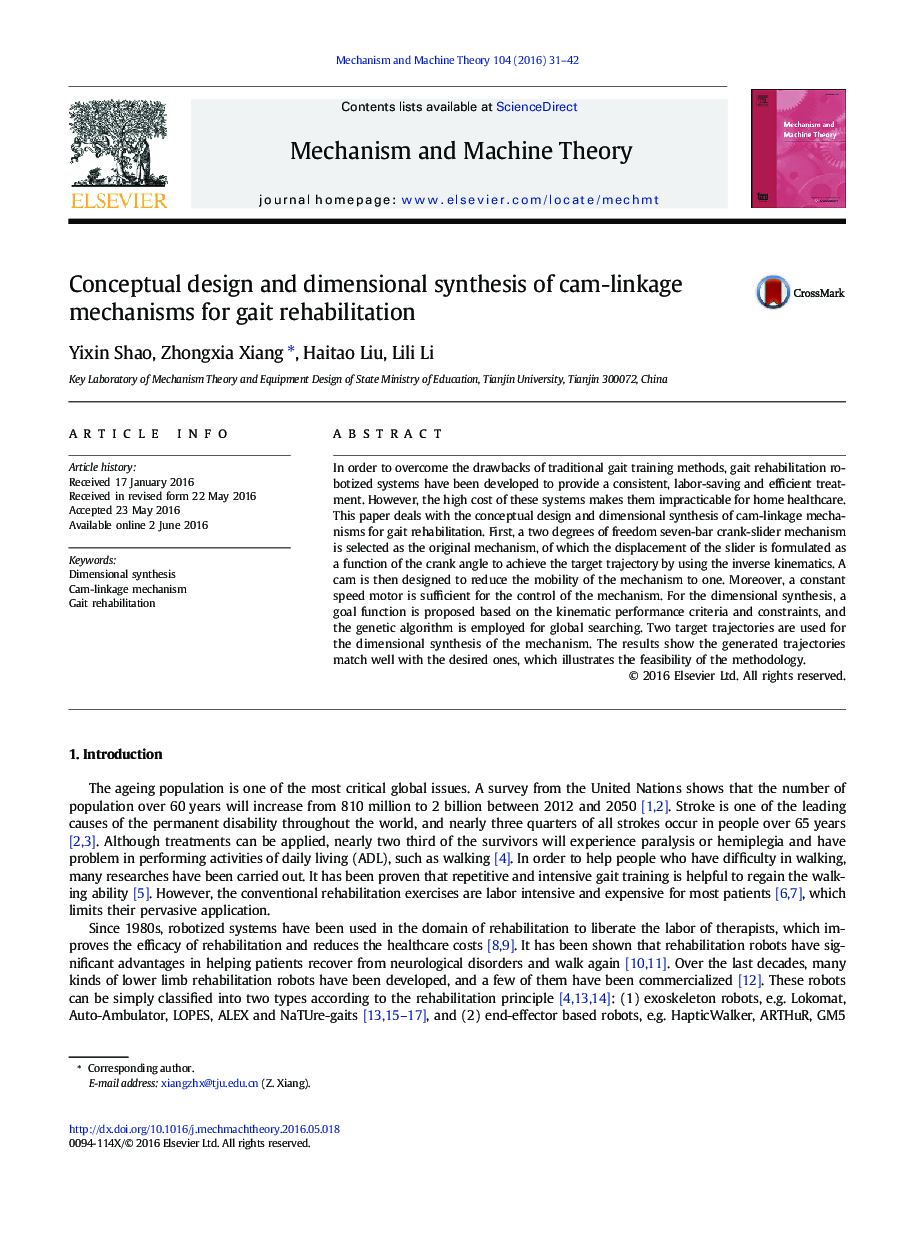| Article ID | Journal | Published Year | Pages | File Type |
|---|---|---|---|---|
| 801945 | Mechanism and Machine Theory | 2016 | 12 Pages |
•A novel cam-linkage mechanism for gait rehabilitation is proposed.•The method of dimensional synthesis of a cam-linkage mechanism is proposed.•Dimensional and kinematic performance criteria and constraints are considered.•Path generation with prescribed timing•A constant speed motor is sufficient for the control of the mechanism.
In order to overcome the drawbacks of traditional gait training methods, gait rehabilitation robotized systems have been developed to provide a consistent, labor-saving and efficient treatment. However, the high cost of these systems makes them impracticable for home healthcare. This paper deals with the conceptual design and dimensional synthesis of cam-linkage mechanisms for gait rehabilitation. First, a two degrees of freedom seven-bar crank-slider mechanism is selected as the original mechanism, of which the displacement of the slider is formulated as a function of the crank angle to achieve the target trajectory by using the inverse kinematics. A cam is then designed to reduce the mobility of the mechanism to one. Moreover, a constant speed motor is sufficient for the control of the mechanism. For the dimensional synthesis, a goal function is proposed based on the kinematic performance criteria and constraints, and the genetic algorithm is employed for global searching. Two target trajectories are used for the dimensional synthesis of the mechanism. The results show the generated trajectories match well with the desired ones, which illustrates the feasibility of the methodology.
